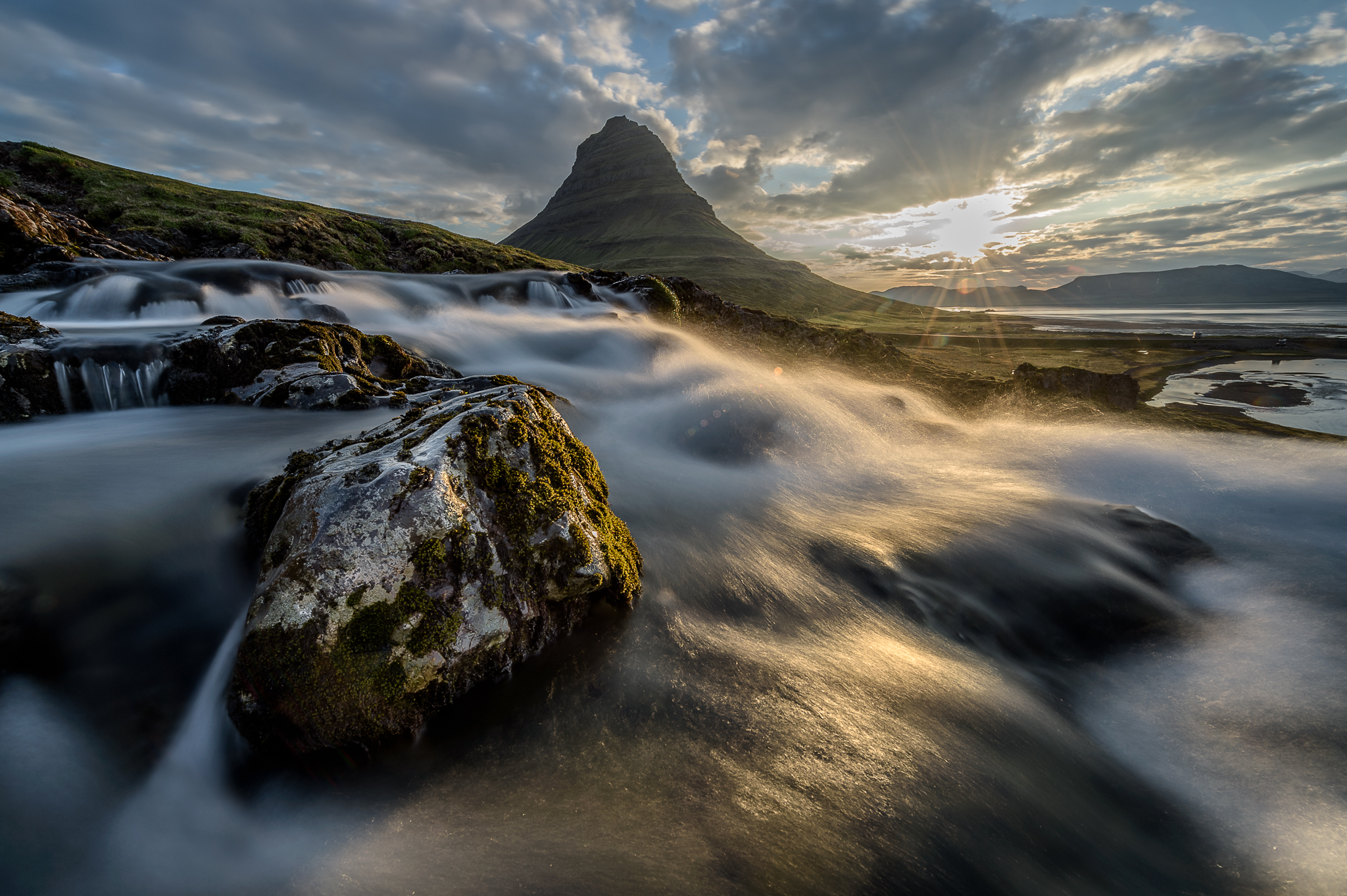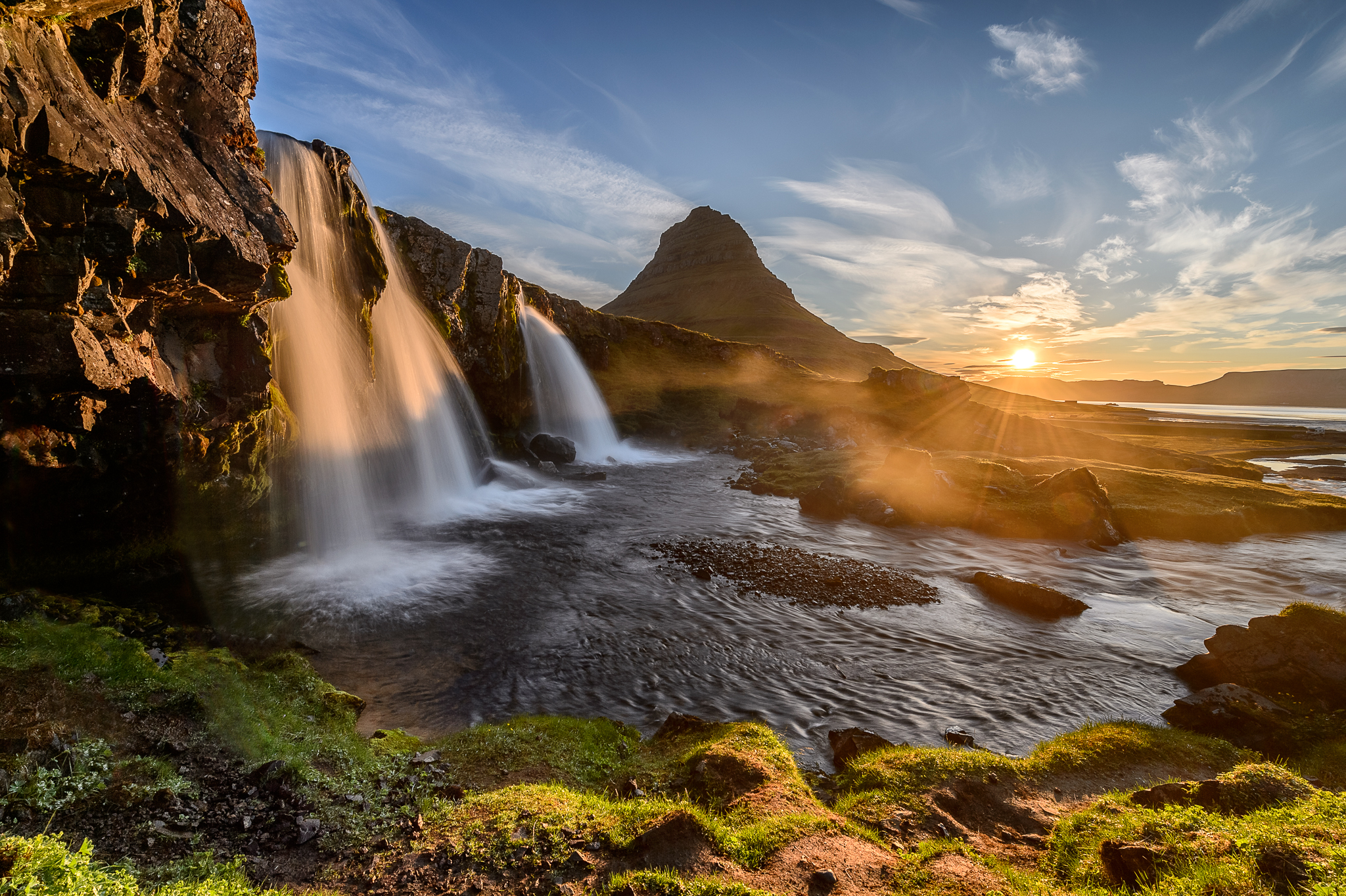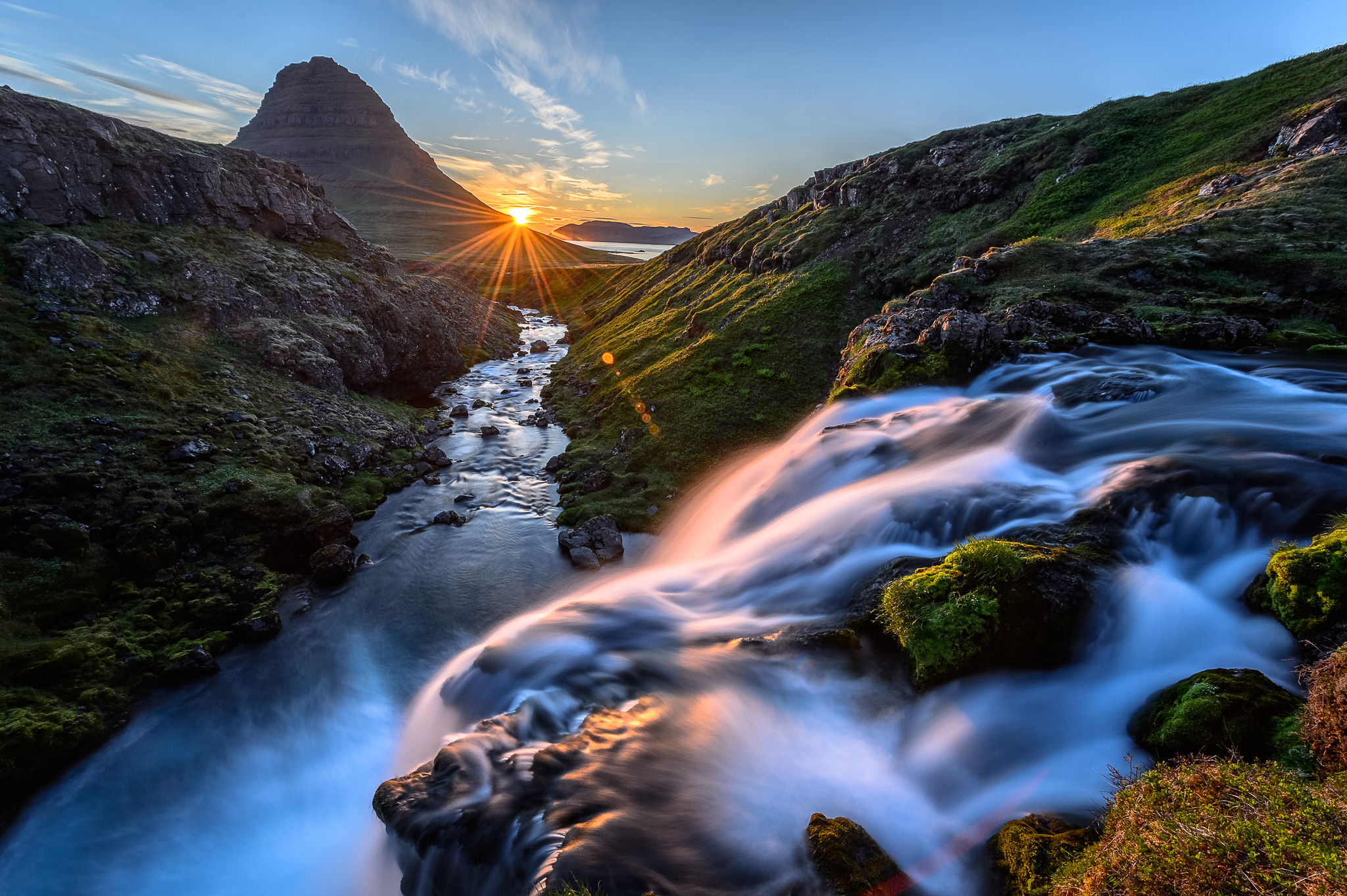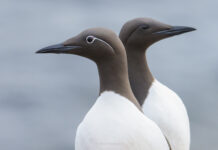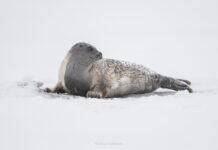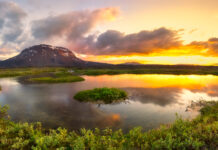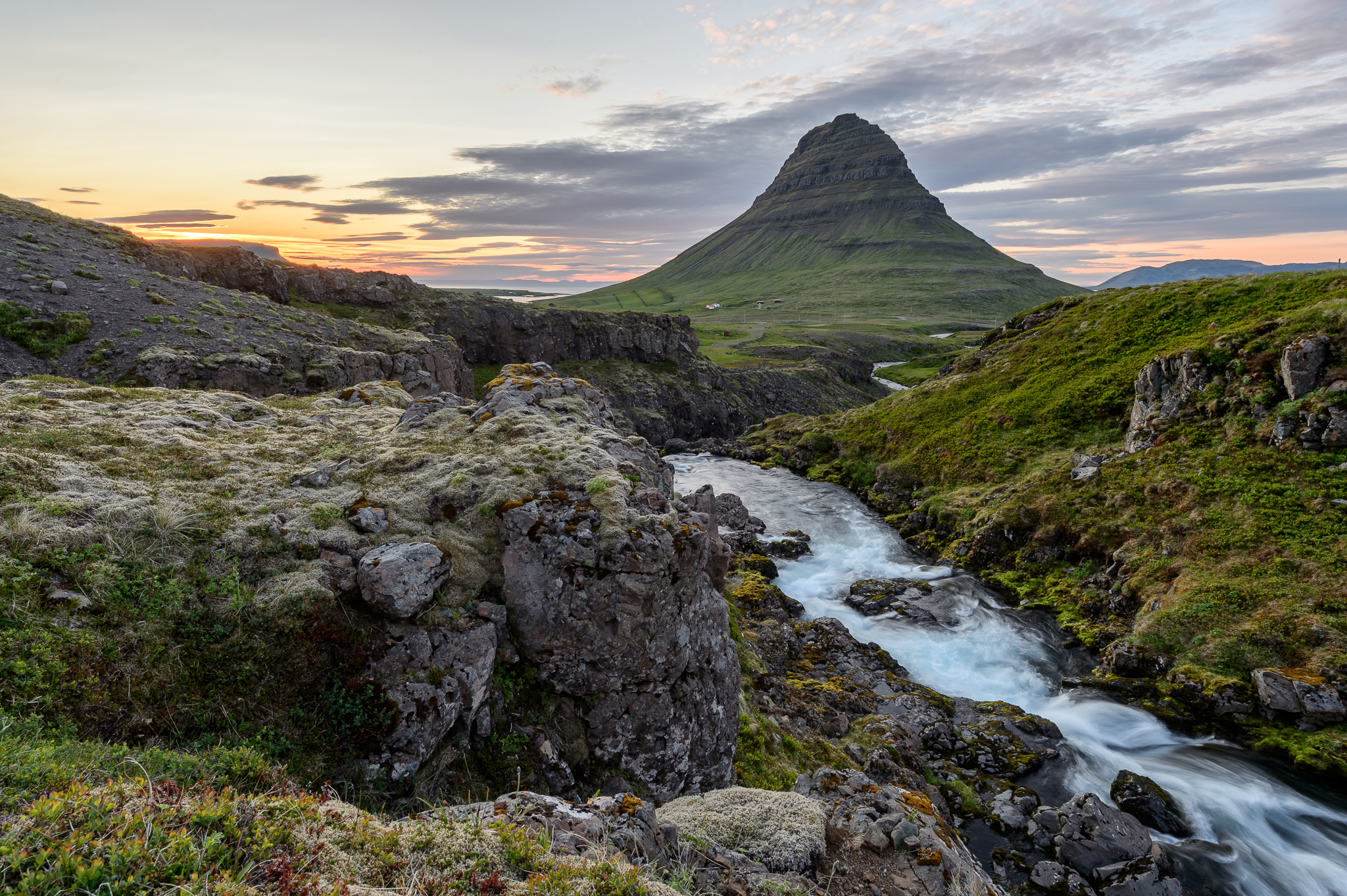 Kirkjufell mountain is one of the most popular locations for photographers in Iceland. There is something magical about this magnificent mountain. The sunset and sunrise give magical colors to the surroundings, sometimes crazy colors and this mountain is becoming a icon for photography in Iceland. We have seen photos of Kirkjufell from hundreds of photographers from all over the world and going there now is a bit like going to a bus-stop. Groups of photographers are there all day long. The shape of the mountain and the dramatic light around sunrise and sunset are probably the reasons for the popularity of this location. Something says this is how mountains should look like. When we were kids, this is how we imagined how mountains should look like.
Kirkjufell mountain is one of the most popular locations for photographers in Iceland. There is something magical about this magnificent mountain. The sunset and sunrise give magical colors to the surroundings, sometimes crazy colors and this mountain is becoming a icon for photography in Iceland. We have seen photos of Kirkjufell from hundreds of photographers from all over the world and going there now is a bit like going to a bus-stop. Groups of photographers are there all day long. The shape of the mountain and the dramatic light around sunrise and sunset are probably the reasons for the popularity of this location. Something says this is how mountains should look like. When we were kids, this is how we imagined how mountains should look like.
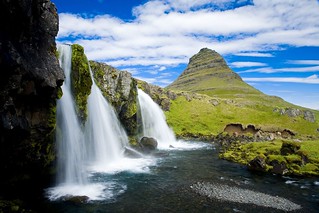
Who took the first iconic photo of Kirkjufell?
This location is a good example of the gold-digger mindedness of photographers. When we see a great photo of a particular location we also want to go there. Create our own view. This is a underestimated factor in attracting tourists. The tourist industry has nothing to sell if it were not for photos of the locations. But who is responsible for the popularity of Kirkjufell? Who took the first iconic photo which drives truckloads of photographers and tourists to Iceland? I did some digging and the Icelander Gunnar Ó Sigmarsson, photographer in Hellissandur seems to be the first to capture the iconic photo of Kirkjufell with the waterfall in the foreground. It was taken 9th of july 2006. He posted it on Flickr and soon others became aware of this magnificent location. A great example how one photo can create hotspots for the tourist industry. Gunnar is an avid photographer living in Hellissandur. It is quite possible that others have been there before, but until then Gunnar get´s the credit in my mind. His website is found at https://www.flickr.com/photos/dimmerinn
I find the gray light of the night typical for the summer nights in Iceland. In few minutes the colors from the sun start to get more saturated and give life to rocks, moss and grass. 15 minutes later, it´s all over.
Finding new points of view around Kirkjufell is not difficult. There is a river running from the opposite mountain towards Kirkjufell which gives many options for foreground. The most common foreground is one of the two waterfalls near the road. The only problem I have with foreground is selecting where I want to be when the sunrise is optimal. The colors are most vivid for only few minutes. Chances to run between setups are limited since the daylight takes over in fifteen minutes or so. Selecting that spot can be difficult and needs planning.
The golden hour last probably around 15 minutes according to my experience. Golden since the surroundings get golden colors from the sun for few minutes. I find it necessary to be careful in the post-processing of the images not to over-saturate the colors. Even though I have a rule to never use the saturation slider in Lightroom or Camera Raw the contrast, highlight and curves can mess up the natural colors. It is therefore a must for for both the experience and the post-processing to take a moment to remember the colors, remember the light, remember the beautiful view of the landscape. Suck in the experience – be there. The camera sees everything differently than our eye. We see into the details of the shadows and at the same time we see the brightest of the sun.
As a rule of thumb I take three different exposures and make sure that one of them is very dark to get the sun without overexposing. Sometimes I use Lightrooms HDR photo merge feature, but since I started to use Nikon D4s I find the dynamic range so extreme that most of the time it is possible to process only the darkest frame.
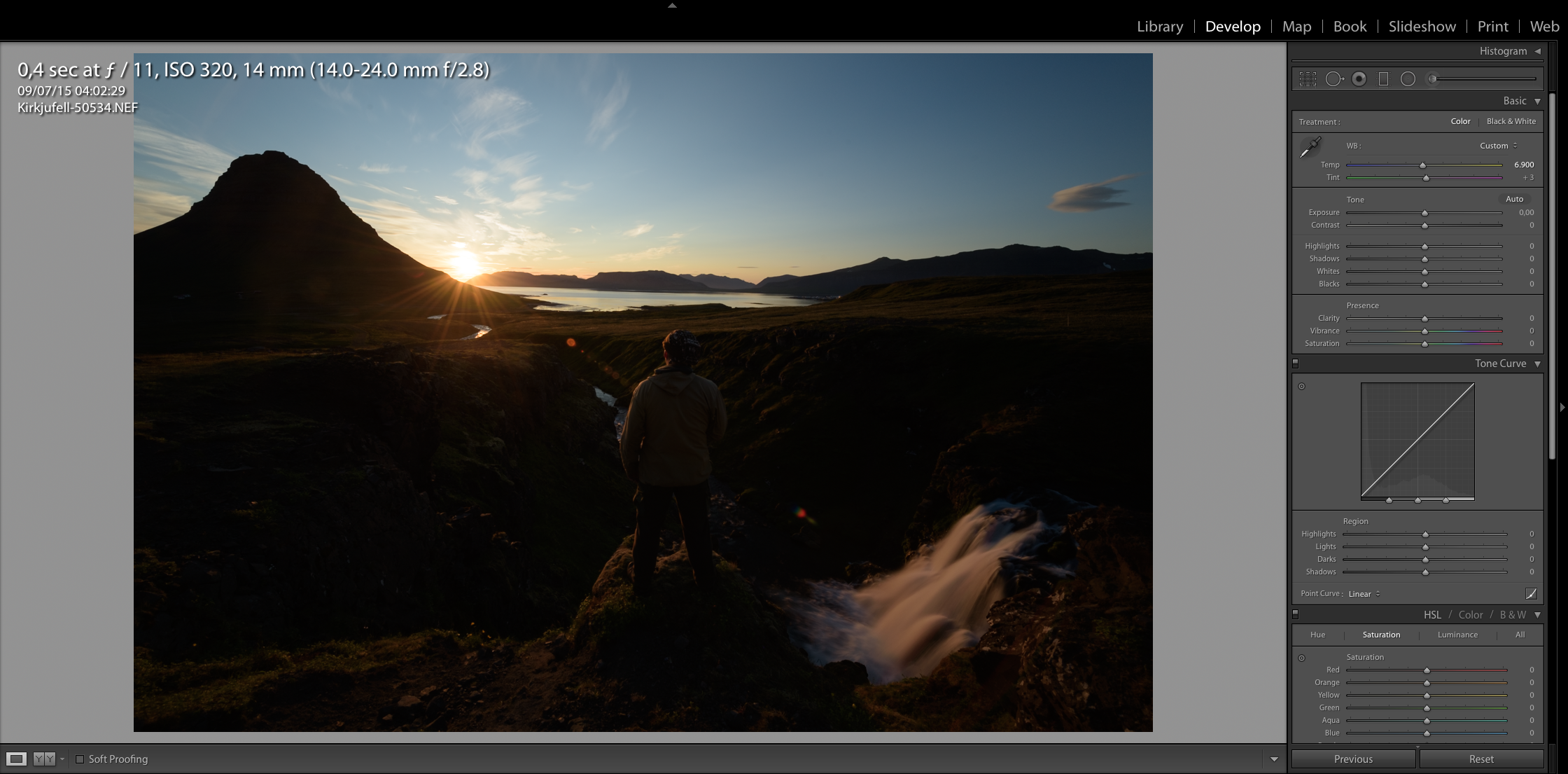
The problem with our advanced cameras today is that there is really no camera that can see dark and bright scenes at the same moment the way our eyes can. This photo is one frame from Nikon D4s before adjustments. This is not the way our eyes see the same scene. We can see the colors and the golden light on the waterfall. In my mind scenes from sunset and sunrise go by different rules than scenes in daylight. The camera can see the same colors as we do in daylight, but the importance of the dynamic range really kicks in when we have extreme brightness and darkness in the same frame. This is where the new sensors we have seen in the past few years really are game-changers.
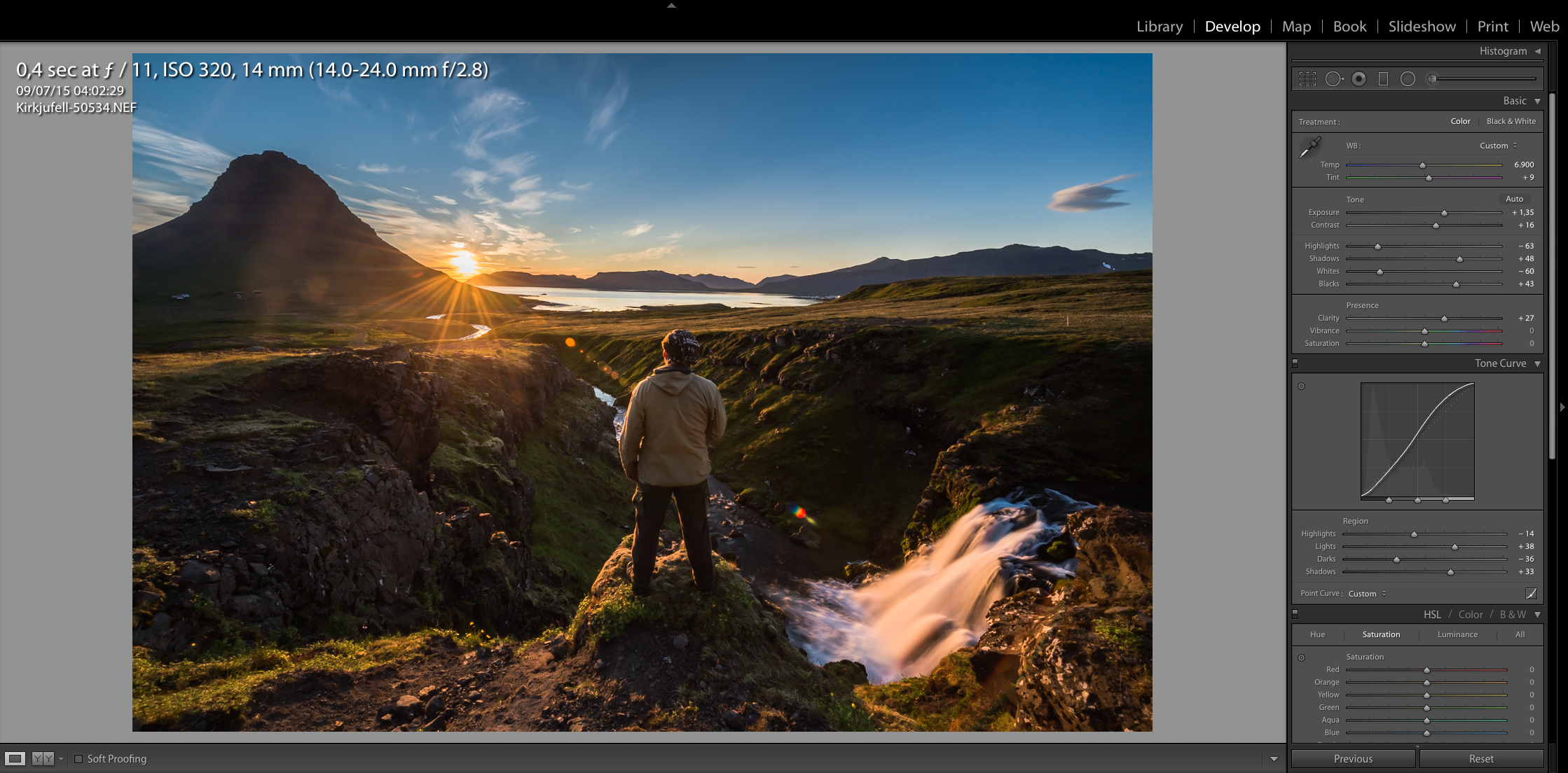
I am sometimes amazed by the dynamic range. Getting a shot like this in one frame would be impossible in my older Nikon D3. The sensors are getting better and I believe we are going to see sensors capable of making shots like these in camera. The first step is in camera HDR. I never use that feature, but the question is when are we creating a picture or taking a picture? It probably does not matter. There is nothing right or wrong in art, there is nothing right or wrong in photography. To me photography depicts life as we experience it. I believe in trying to depict landscape scenes as my eye sees them even though nothing is forbidden. Going to the edge, but not over the edge in post-processing and creating moments as we remember them is the art.

